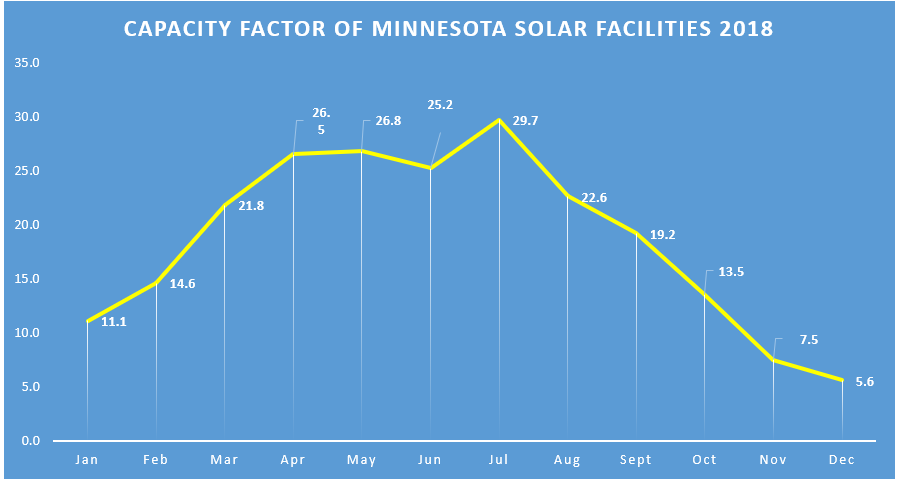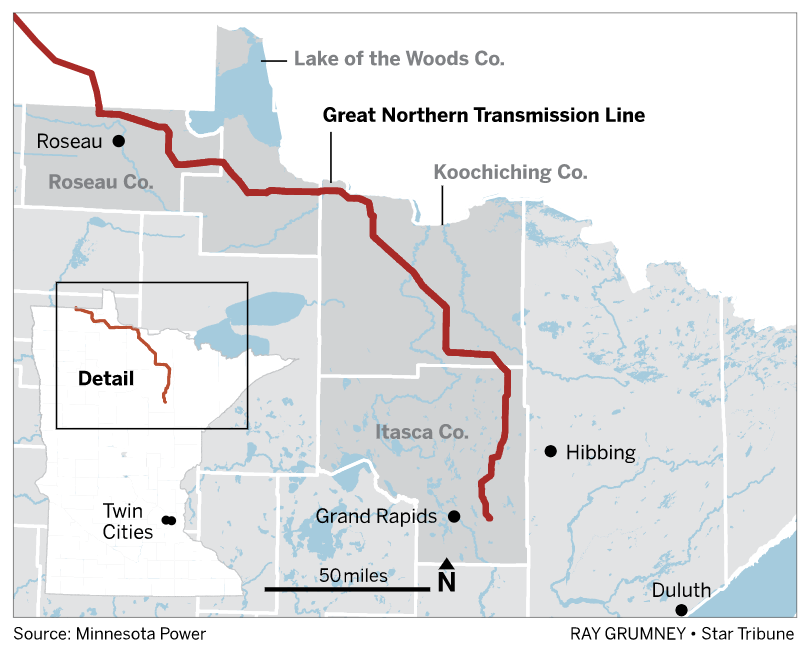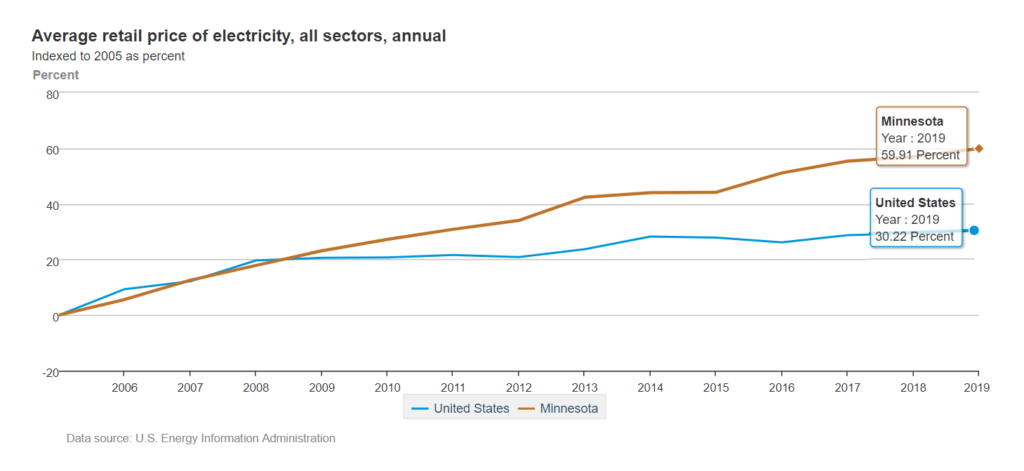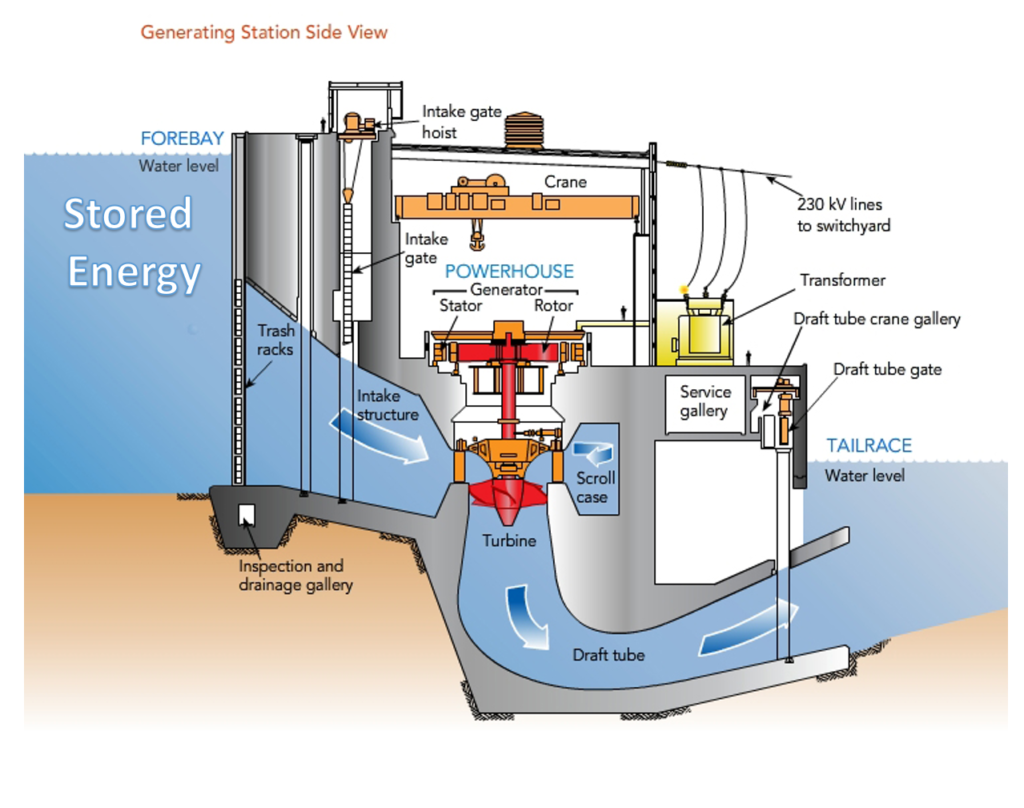Canadian Hydroelectric Transmission Line Will Bring In More Renewable Energy Than All Minnesota Solar Projects – But None of It is “Renewable”
Last week, Minnesota Power announced the completion of its Great Northern transmission line, which will import 1.4 million megawatt hours of hydroelectric power from Manitoba, Canada, to Northern Minnesota, enough to power nearly 150,000 Minnesota homes for an entire year.
Interestingly, this single transmission line will provide 34 percent more electricity than all of Minnesota’s solar panels, combined. However, because of the way Minnesota’s renewable energy mandate is written exactly zero of this renewable electricity will be considered “renewable” by the Minnesota state government.
Solar Is Less Productive Than Hydro Power
According to the U.S. Energy Information Administration, Minnesota generated about 1 million megawatt hours of electricity with solar in 2018, or enough to power about 110,500 households. While this may not sound the alarm bells for the casual reader, it definitely should, because it shows how much more productive hydroelectric power is than solar.
The Great Northern Transmission line will have a capacity to transmit 250 megawatts of power, which could provide about 2.1 million megawatts hours, or enough to power 232,000, if the line were operating at full capacity. This means Minnesota Power would be utilizing more than 60 percent of the line’s capacity.
One the other hand, Minnesota had 734 megawatts of solar installed, but generated just a little over 1 million megawatt hours in 2018. If solar had been generating at full capacity, it would have generated about 6.5 million MWh, meaning Minnesota’s solar displays produced only 16 percent of their potential output. In energy lingo, this percentage of output is called a capacity factor.

The low productivity of solar means we spend a lot of money for only a little energy. If we take the National Renewable Energy Laboratory (NREL) cost estimates for solar and apply them to Minnesota’s solar installations, we can estimate that Minnesota has spent about $1.5 billion on installing solar panels from 2016 to 2018.
In contrast, Minnesota Power paid just $325 million for the GNT, although it will pay an additional cost for the electricity it purchases, and these costs do not appear to be publicly available.
Even though hydroelectric power is obviously renewable, exactly zero of the electricity purchased from Canada will count toward satisfying Minnesota’s renewable energy mandate, the Next Generation Energy Act (NGEA). This is because the NGEA specifically excluded large hydroelectric generators to promote the development of wind and solar.

Some people have argued that Minnesota shouldn’t count the hydroelectric power from Canada because one of the goals of the NGEA was to build renewable power plants in Minnesota and provide local jobs. However, many Minnesota utilities are building wind facilities in North and South Dakota to meet their mandated renewable percentages, which is not creating local jobs.
If an energy resource is renewable, it should be counted as renewable. The double standard at play here is arbitrary and decidedly non-scientific. It has also likely increased the cost of electricity paid by Minnesota families and businesses and resulted in higher carbon dioxide emissions.
In other words, Minnesota’s liberal policies have resulted in our state having the worst of both worlds, higher electricity prices and higher emissions than if we had embraced hydroelectric power as a renewable resource.
Higher Electricity Prices
As all of our regular readers know by now, Minnesota’s electricity prices have increased 30 percent faster than the national average since 2005, when the legislature mandated Xcel Energy to put wind on its system, and the NGEA made things worse in 2007.

This has forced Minnesota families to pay more to keep their lights on. It has also forced energy intensive businesses in Minnesota, like farming, manufacturing, and mining to pay more to keep their doors open. In some cases, high energy prices are a deal breaker, and these businesses leave our state, in others, it simply makes Minnesota businesses to become less competitive with their competition in other states, and countries.
Conservatives should be outraged that Minnesota’s early experiment with the Green New Deal has produced such bad economic outcomes. Minnesota liberals, especially those who claim climate change is an “existential crisis” like Governor Tim Walz, should be outraged that emission are likely higher due to our reliance on wind and solar than they would be if we had invested early in hydroelectric power.
Higher Carbon Dioxide Emissions
Hydroelectric power is much more reliable than wind or solar because the fact that water his held behind a dam and is released to generate electricity when the energy is needed acts as a natural battery. This means hydroelectric power, unlike wind or solar, can be stored until it is needed, as you can see in the diagram below.

This makes hydro electric power far more useful than wind or solar, because it is self-storing, and it can be used to generate electricity whenever you need it. This dispatchability means that unlike wind and solar, which always require backup power plants when the weather isn’t cooperating, hydroelectric power can more easily be a one-to-one replacement for other power plants like coal or natural gas plants. This means they are also more able to replace the carbon dioxide emissions that accompany these fuels.
In fact, Minnesota could easily be 100 percent renewable if it were to embrace, rather than exclude, hydroelectric power from Canada. Manitoba Hydro has a current generating capacity of 5,690 megawatts, which could power enough to power up to 5.2 million Minnesota homes. In other news, Minnesota only has 2.2 million homes.
Manitoba Hydro could also add more dams to their system and produce more energy. The company will complete a 695 MW facility in 2021, and the company has the potential to build 4,300 MW of additional capacity. Together, these power plants would be able to power 9.9 million Minnesota homes for an entire year.
Political Barriers to Hydroelectric Power
Hydroelectric power appears to be a no-brainer, so why haven’t Minnesota politicians legalized large hydro facilities for the NGEA? I’ll let you, dear reader, fill in that blank.
Conservative lawmakers have tried to change the NGEA multiple times to allow large hydro to count toward our renewable energy mandates, but it has been systematically opposed by liberal politicians. Their opposition is rooted in the fear that allowing hydro to count toward the mandate would replace the need for wind and solar on the electric grid.
In essence, they are afraid that a level playing field for renewables would allow a superior product to win out over their preferred pet projects.
This is ultimately why it is impossible to take advocates of a Minnesota Green New Deal seriously. If they really care about the environment, they should be seeking solutions that have a maximum environmental return on investment. Instead, they are stubbornly forcing Minnesotans to have the worst of both worlds.